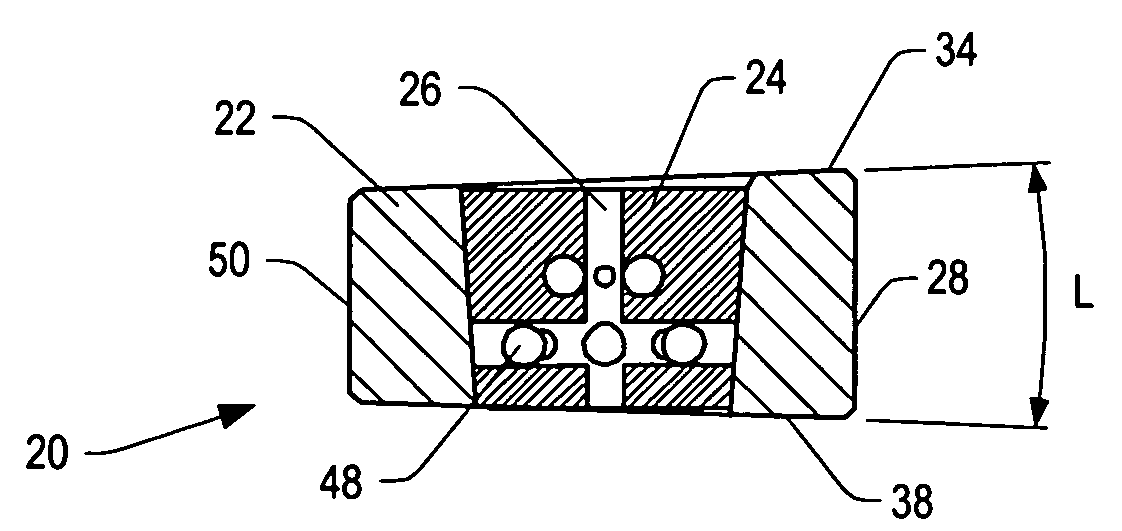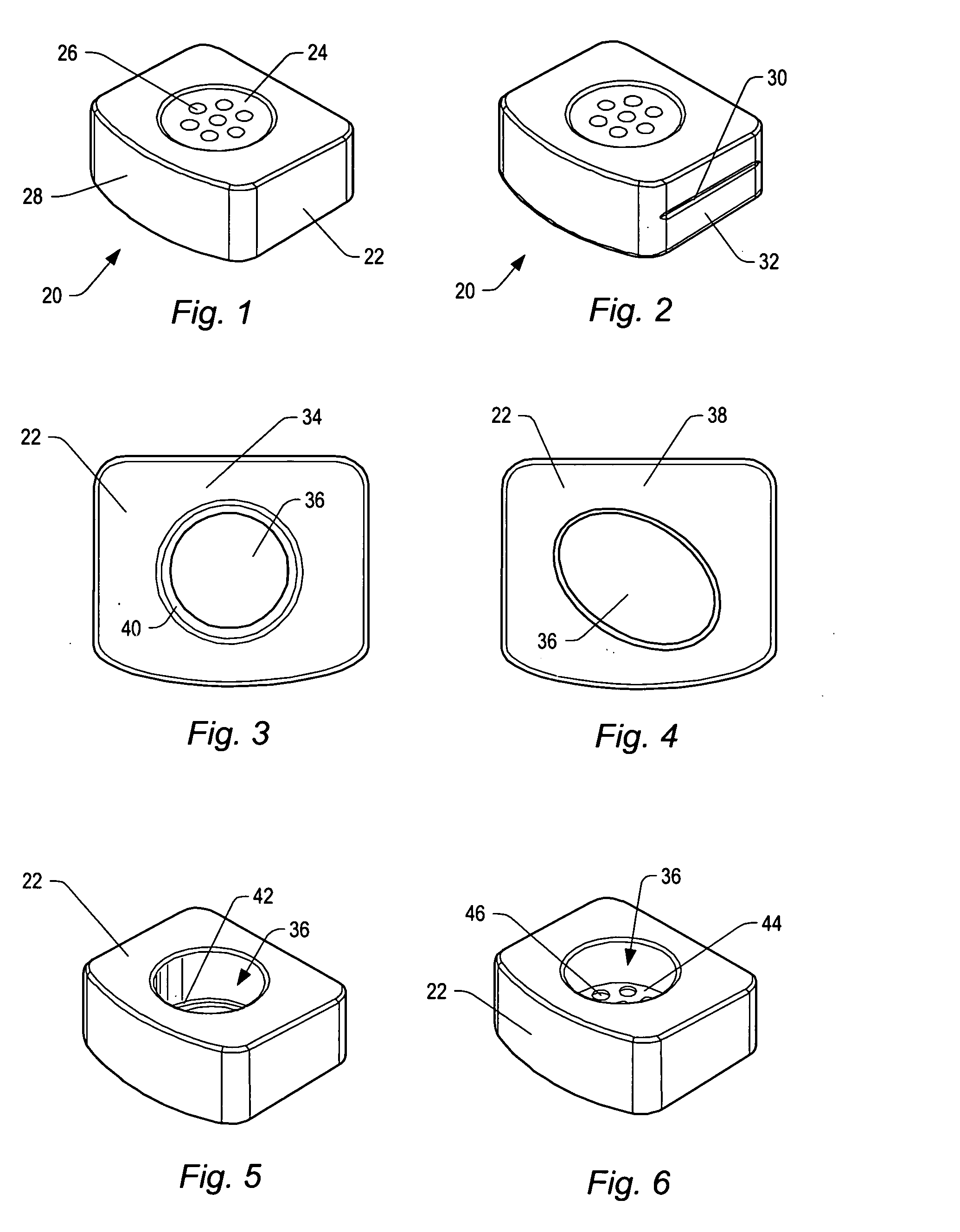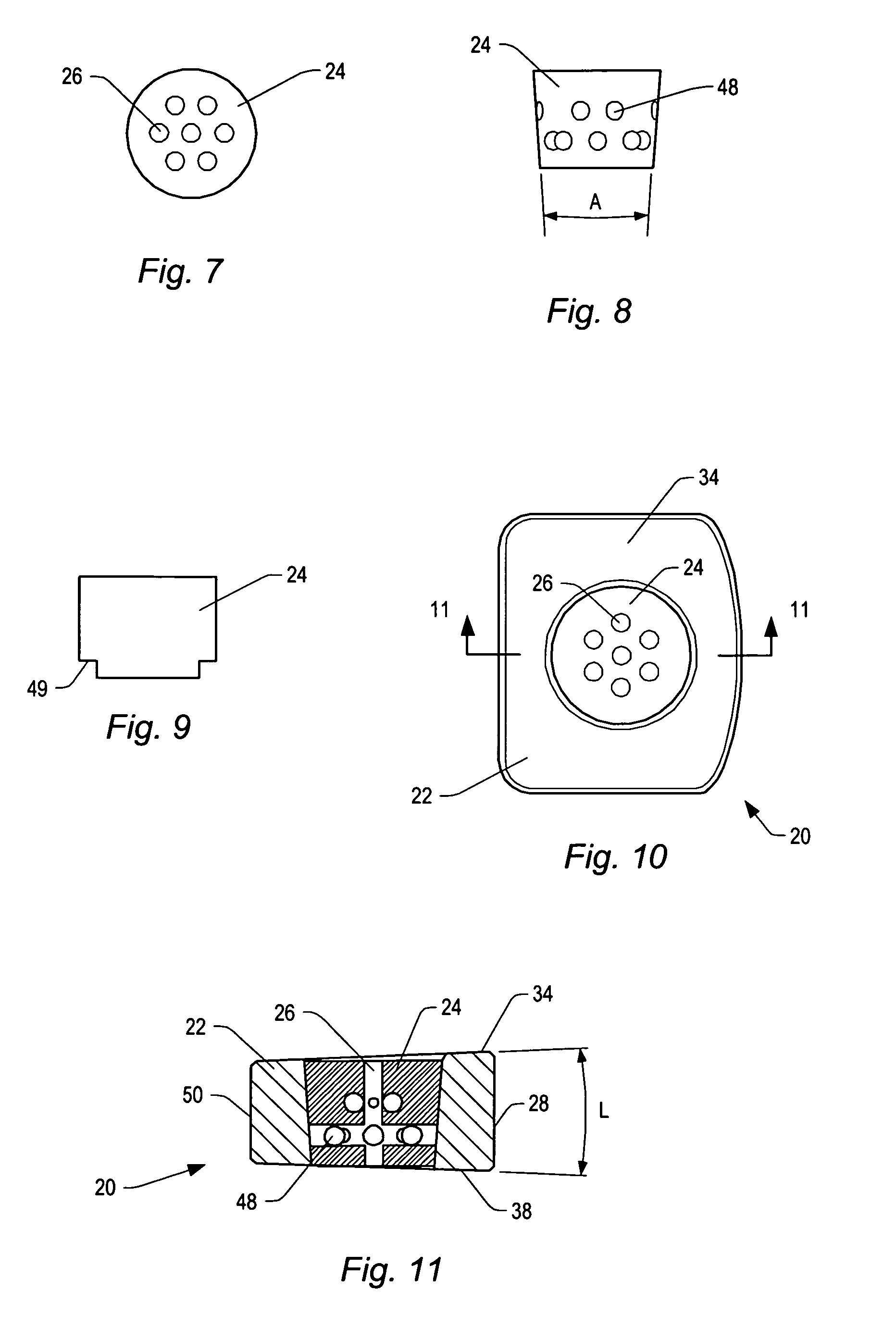Spinal implants with body and insert
a technology of spine and body, applied in the field of spine implants, can solve the problems of destabilizing the spinal column, altering the natural separation distance between adjacent vertebrae, pain and/or nerve damage, etc., and achieve the effect of promoting the fusion of adjacent vertebra
- Summary
- Abstract
- Description
- Claims
- Application Information
AI Technical Summary
Benefits of technology
Problems solved by technology
Method used
Image
Examples
Embodiment Construction
[0034] A spinal implant may be used during the treatment of trauma, disease, and / or neoplasia. A spinal implant may establish a separation distance between adjacent vertebrae. A spinal implant may fill a defect in a single vertebra. The spinal implant may promote bone growth between the adjacent vertebrae. The bone growth may fuse the vertebrae together. The spinal implant may establish a desired angle between the vertebrae. In some spinal implant embodiments, a surface of the spinal implant that will contact a vertebra, or both surfaces of the spinal implant that will contact the vertebrae, may be tapered so that the spinal implant has a desired angle. A cervical or lumbar spinal implant may have an anterior height that is larger than a posterior height to establish a desired amount of lordosis. A cervical spinal implant may have from about 0° to about 12° of lordotic angle. Some cervical spinal implants may have from about 0° to about 6° of lordotic angle, or from about 3° to abou...
PUM
 Login to View More
Login to View More Abstract
Description
Claims
Application Information
 Login to View More
Login to View More - R&D
- Intellectual Property
- Life Sciences
- Materials
- Tech Scout
- Unparalleled Data Quality
- Higher Quality Content
- 60% Fewer Hallucinations
Browse by: Latest US Patents, China's latest patents, Technical Efficacy Thesaurus, Application Domain, Technology Topic, Popular Technical Reports.
© 2025 PatSnap. All rights reserved.Legal|Privacy policy|Modern Slavery Act Transparency Statement|Sitemap|About US| Contact US: help@patsnap.com



